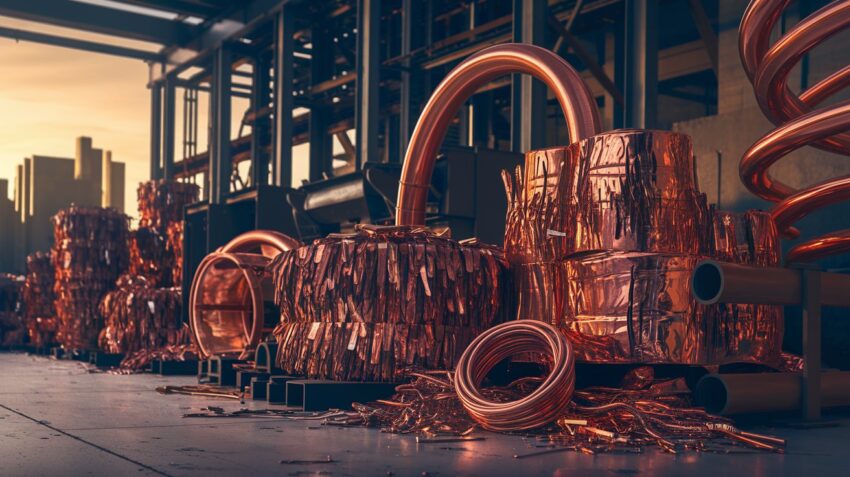Recycling scrap metal is one of the most efficient ways to reduce waste, conserve natural resources, and protect the environment. From old car parts and wiring to discarded appliances and construction debris, nearly all metal products can be repurposed. But what actually happens once you sell your scrap metal to a recycling company? Let’s explore the complete recycling process, step by step.
Step 1: Collection and Sorting
The recycling journey begins with collection. Scrap buyers and recyclers gather metal waste from households, factories, demolition sites, and businesses. Once collected, the materials are sorted by type—for example, separating ferrous metals (like iron and steel, which contain magnetic properties) from non-ferrous metals (such as copper, brass, and aluminum). Sorting is crucial because different metals require different recycling techniques and melting points.
Advanced facilities often use magnets, sensors, and spectrometers to identify and categorize metals more efficiently. This ensures that the recycling process remains accurate and that each metal retains its purity.
Step 2: Cleaning and Preparation
After sorting, the scrap metal goes through cleaning to remove any contaminants such as oil, paint, rubber, or plastic coatings. Clean metal produces better-quality recycled material. Depending on the type of metal, the cleaning process may include shredding, degreasing, or chemical treatment.
In some cases, large items like machinery, vehicles, or appliances are dismantled to extract recyclable metal parts. Non-metal materials are separated and either disposed of properly or recycled through other processes.
Step 3: Shredding and Crushing
Next comes size reduction. The cleaned metal is fed into shredders or crushers that break it into smaller, uniform pieces. Smaller metal fragments melt faster and more evenly during smelting, which saves energy.
For example:
- Aluminum is often shredded into small chips or sheets.
- Steel may be compacted into cubes or crushed into smaller chunks.
This step helps make the next stages more efficient and environmentally friendly.
Step 4: Melting
The shredded metal is then transferred into a furnace designed specifically for that metal type. Each furnace operates at different temperatures depending on the metal’s melting point. For instance, aluminum melts at around 660°C, while copper melts closer to 1,085°C.
The melting process can take from a few minutes to several hours. However, it uses significantly less energy than producing new metal from ore—up to 95% less in some cases. This is one of the main reasons why metal recycling is so sustainable.
Step 5: Purification
Once melted, the metal undergoes purification to remove any impurities. This ensures the recycled metal is as strong and pure as newly mined metal. Common purification techniques include:
- Electrolysis (for metals like copper)
- Distillation or flux refining
- Magnetic separation (to remove unwanted ferrous particles)
High-quality purification ensures that the recycled metal meets industrial standards and can be reused in sensitive applications such as manufacturing, construction, and electronics.
Step 6: Solidification and Cooling
After purification, the molten metal is poured into molds to create solid shapes such as bars, ingots, or sheets. These standardized forms make it easier to transport and reuse the metal in various industries.
During cooling, some manufacturers mix the metal with small amounts of other elements to form alloys, improving properties like strength, flexibility, or corrosion resistance. For example, mixing iron with carbon creates steel, one of the most commonly recycled and reused materials in the world.
Step 7: Transportation and Reuse
Finally, the solidified metal blocks or coils are transported to manufacturing plants. These recycled metals are then used to produce a wide range of products—from vehicles and building materials to electronics and household appliances.
At this stage, the recycled metal has officially completed its transformation from waste to a new resource. The cycle can continue indefinitely because most metals can be recycled without losing quality.
Environmental and Economic Benefits of Scrap Metal Recycling
Recycling metal doesn’t just conserve natural resources—it delivers both environmental and economic advantages:
- Energy Efficiency: Recycling metal saves up to 95% of the energy compared to mining and refining new metal.
- Reduced Pollution: It minimizes greenhouse gas emissions and industrial waste.
- Landfill Reduction: Less metal waste ends up in landfills, keeping our environment cleaner.
- Job Creation: The recycling industry supports thousands of jobs in collection, sorting, and processing sectors.
- Sustainable Economy: By reusing materials, businesses can reduce costs and promote circular economy practices.
The Future of Scrap Metal Recycling
As technology advances, metal recycling continues to become smarter and more efficient. Automated sorting systems, AI-based material identification, and green-energy furnaces are making the process cleaner and faster than ever before. Governments across the UAE and beyond are also encouraging recycling through sustainability initiatives and awareness programs.
Final Thoughts
Understanding how scrap metal is recycled gives a deeper appreciation of how everyday waste can be transformed into valuable raw material. Whether you are an individual with old wires and cans or a business with industrial scrap, recycling your metal contributes to a cleaner, greener planet.
If you have unwanted metal lying around, reach out to a trusted local recycler like Scrap Buyer All UAE. You’ll not only earn extra cash but also play a vital role in supporting a sustainable future for the region.

